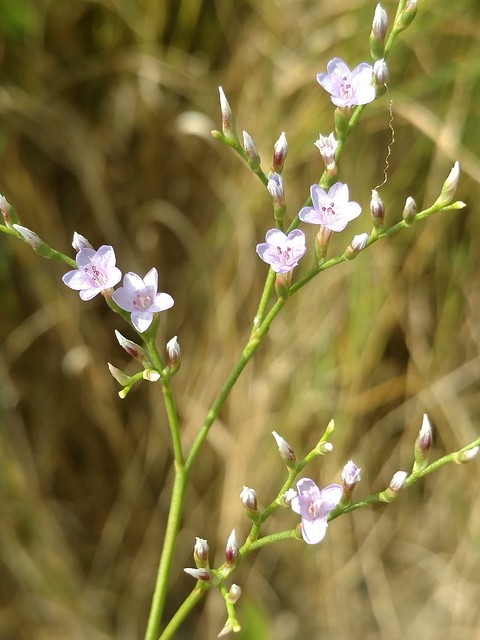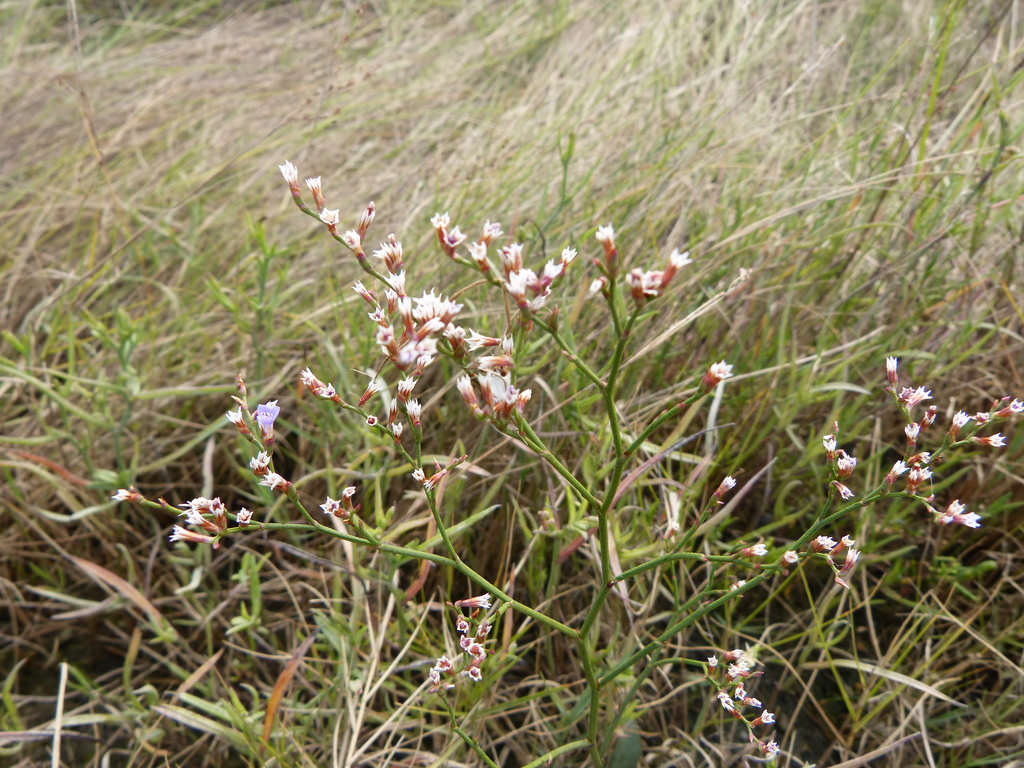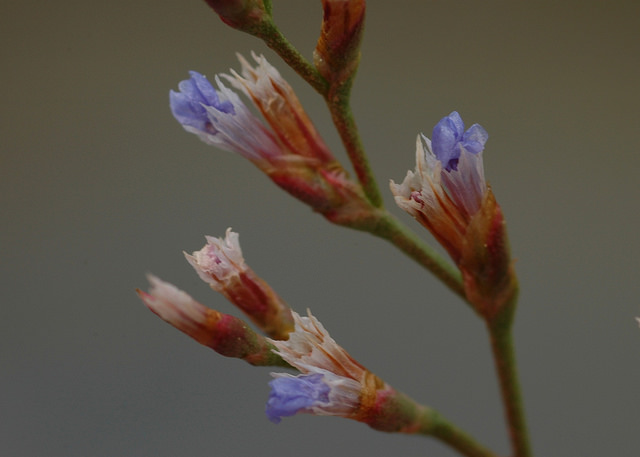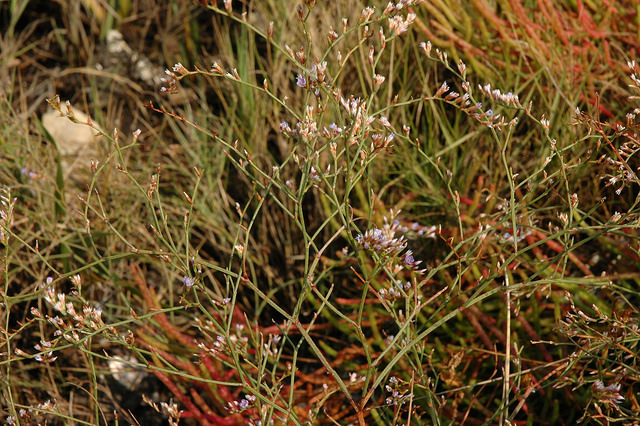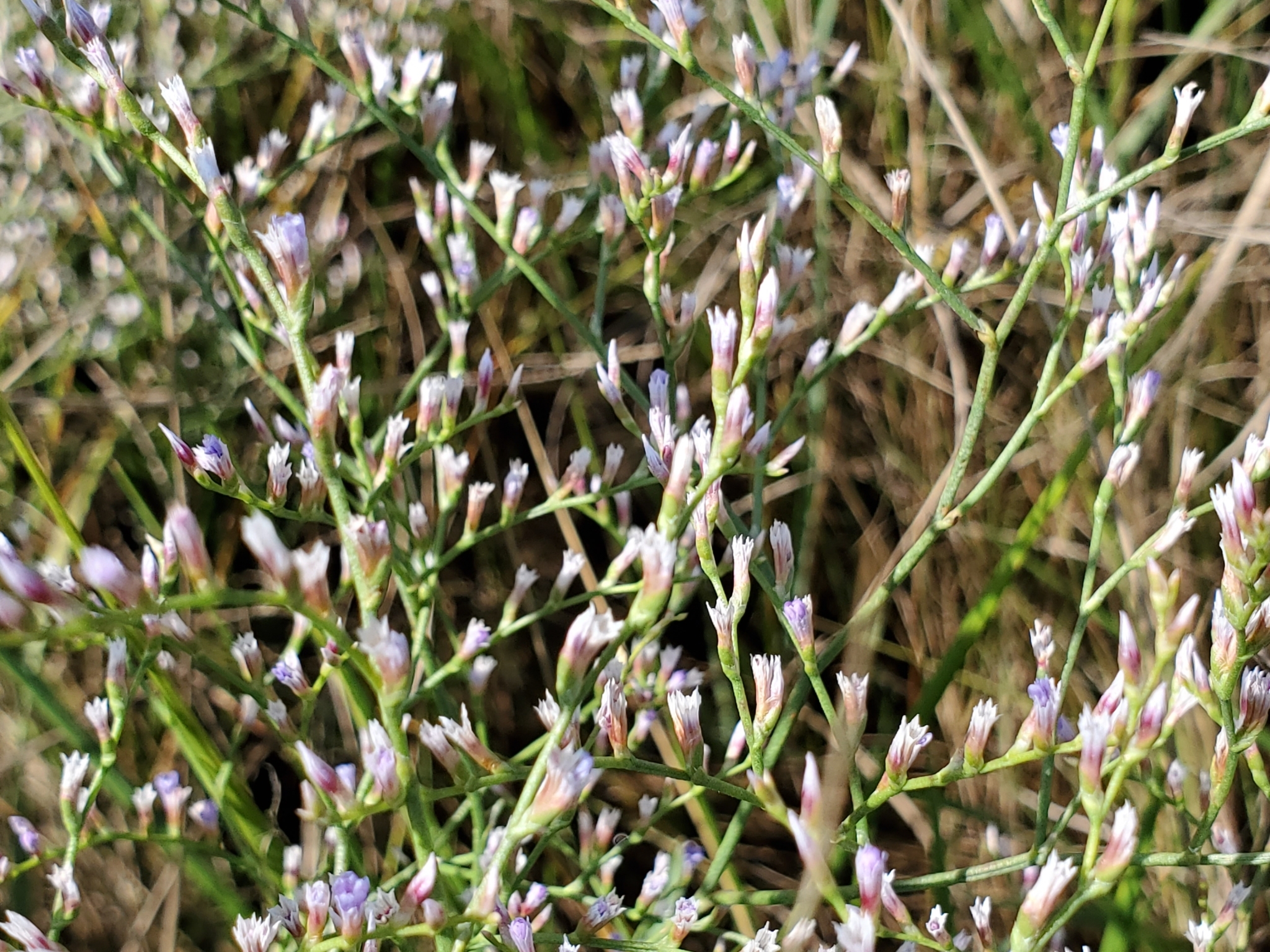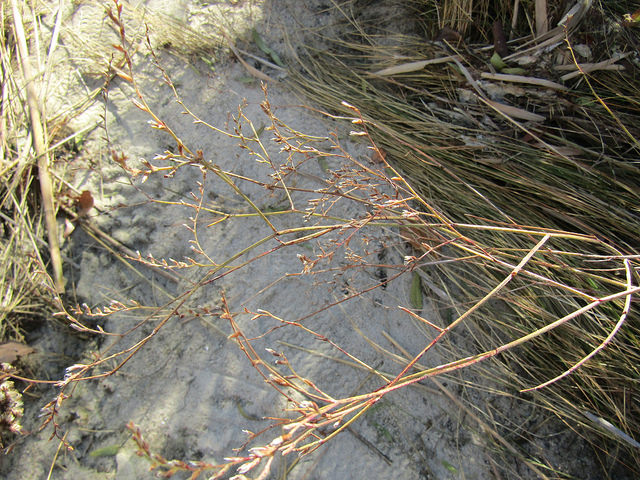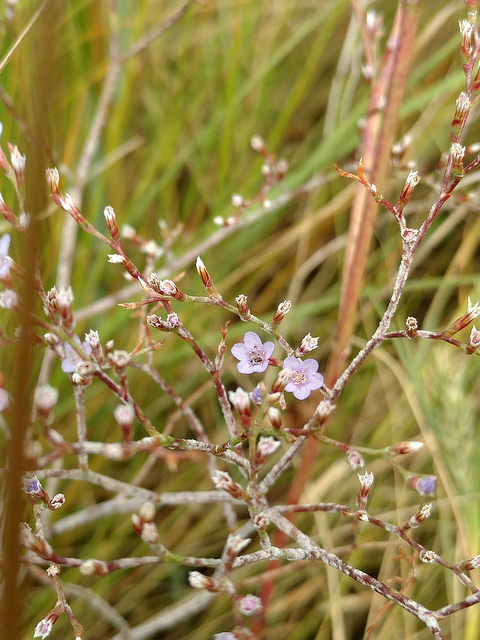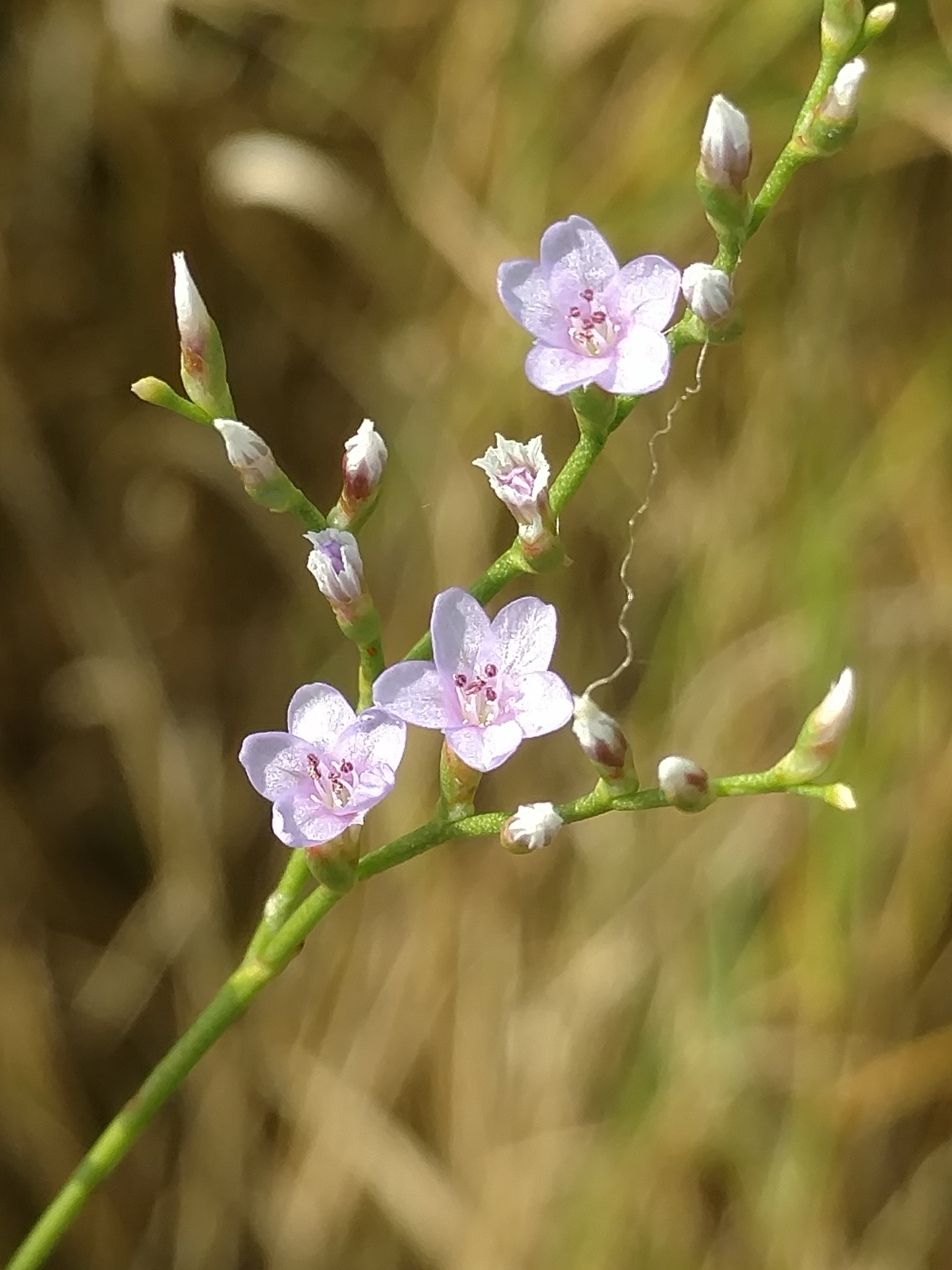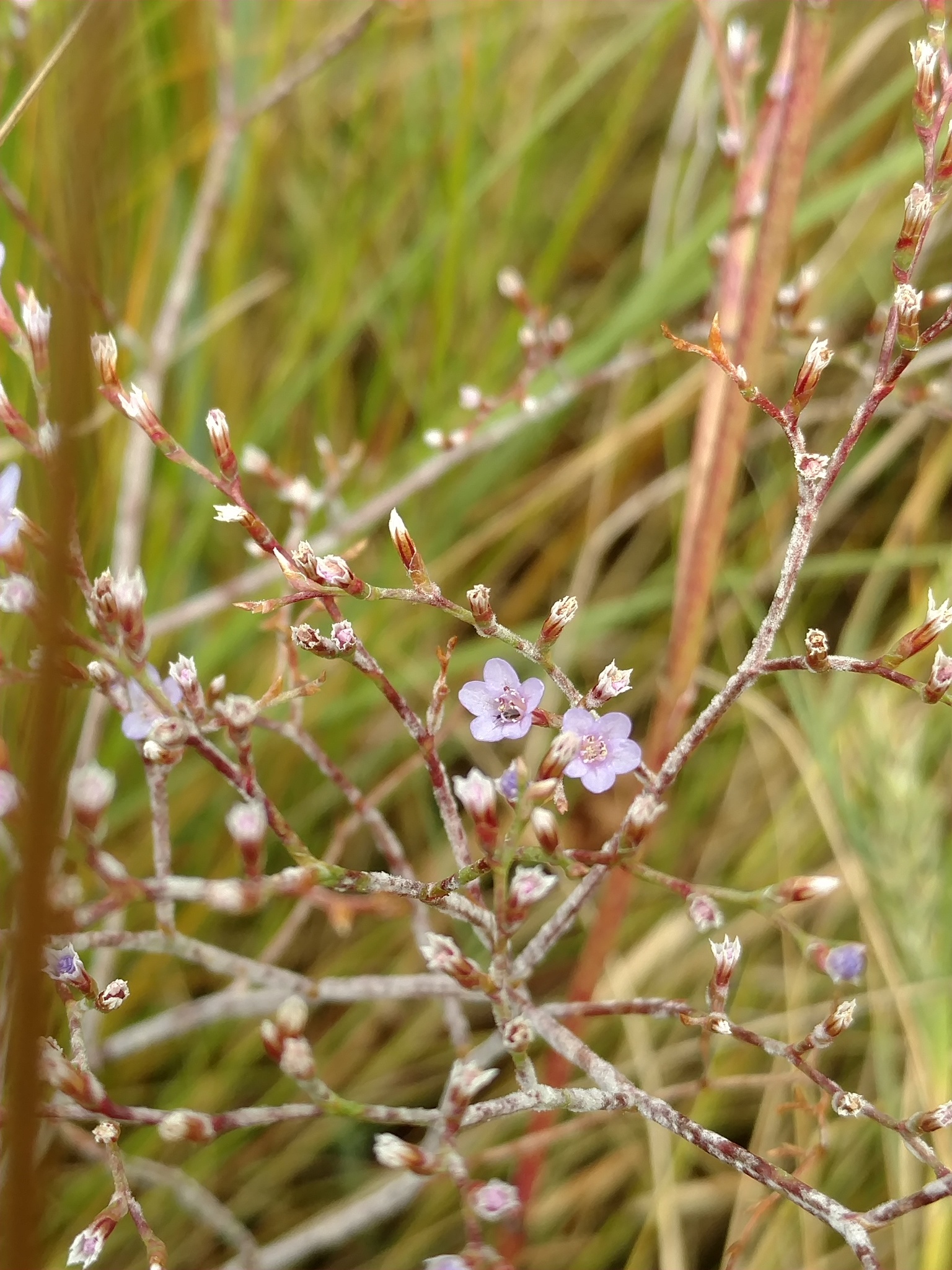Map Snapshot










104 Records
Status
A common plant of salt marshes of the Chesapeake Bay and Coastal Bays. Lavender Thrift grows along the Atlantic Seaboard from Maine to Florida. It also grows along the Gulf Coast from Florida to the Texas coast, and south into Mexico.
Description
An erect plant with ovate basal leaves that form a rosette at the bottom of the stem.Flowers are small and light purple (1/8" wide). The flowers grow only on one side of a branch. The white sepals may persist after the flowers have withered and fallen.
Where To Find
The salt marshes of Elliott Island Road, Deal Island WMA, and Assateague Island.
Relationships
Along the Gulf Coast there has been studies that show there is facultative mutualism between the Atlantic Ribbed Mussel and Lavender Thrift (Moore, 2016). In Maine, Charley Eiseman found leaf mines on Lavender Thrift, but no one can figure out what caused the mines. There is speculation that the mines may have been caused by a crustacean or worm (Bug Tracks, 2013).
Seasonality Snapshot
Source: Wikipedia
| Limonium carolinianum | |
|---|---|

| |
| Scientific classification | |
| Kingdom: | Plantae |
| Clade: | Tracheophytes |
| Clade: | Angiosperms |
| Clade: | Eudicots |
| Order: | Caryophyllales |
| Family: | Plumbaginaceae |
| Genus: | Limonium |
| Species: | L. carolinianum
|
| Binomial name | |
| Limonium carolinianum (Walter) Britton[1]
| |
| Synonyms[2] | |
|
List
| |
Limonium carolinianum, known variously as Carolina sealavender, canker root, ink root, marsh root, lavender thrift, American thrift, or seaside thrift,[3][4] is a species of flowering plant native to the eastern shores of North America, from northern Mexico to Canada.[2] It is a slow-growing perennial herb found in salt marshes and other maritime habitats. Its inflorescences are frequently harvested for use in cut flower arrangements.[5]
References
[edit]- ^ Mem. Torrey Bot. Club 5: 255 (1894)
- ^ a b "Limonium carolinianum (Walter) Britton". Plants of the World Online. Board of Trustees of the Royal Botanic Gardens, Kew. 2017. Retrieved 28 November 2020.
- ^ Alan R. Smith (2005). "Limonium carolinianum". In Flora of North America Editorial Committee (ed.). Flora of North America North of Mexico (FNA). Vol. 5. New York and Oxford: Oxford University Press. Retrieved 3 December 2020 – via eFloras.org, Missouri Botanical Garden, St. Louis, MO & Harvard University Herbaria, Cambridge, MA.
- ^ "Limonium carolinianum - Species Details". Atlas of Florida Plants. Retrieved 3 December 2020.
- ^ Baltzer, Jennifer L.; Reekie, Edward G.; Hewlin, Heather L.; Taylor, Philip D.; Boates, J Sherman (2002). "Impact of flower harvesting on the salt marsh plant Limonium carolinianum". Canadian Journal of Botany. 80 (8): 841–851. doi:10.1139/B02-070. S2CID 54602331.

